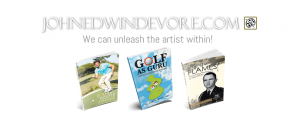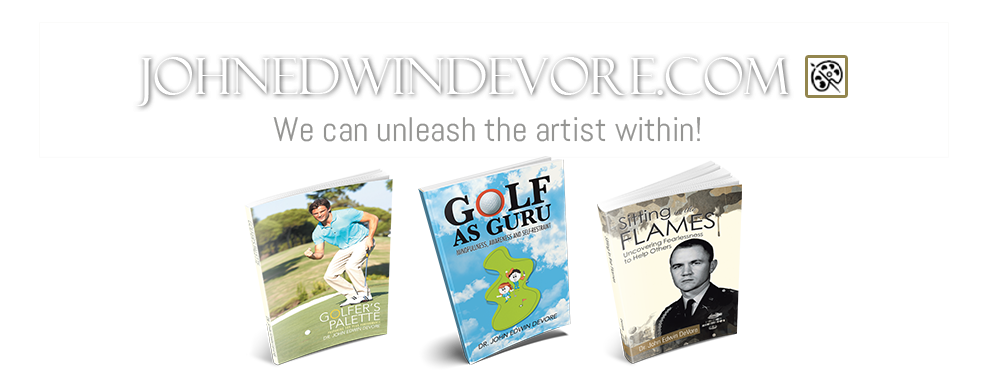SIMPLY TELL THE TRUTH
Posted on September 18, 2021
Truth and trust matter; and truth and trust are an inseparable duo!
Truth connotes in accordance with fact or reality, or belief that is accepted as true; and trust is about reliance on the integrity, strength, ability, and surety of a person, place, or thing. Moreover, it is about confidence in a person, place, or thing. A personal contention is that trust is a result and is earned; and it seems to be intimately related to honesty, respect, and one’s capacity to influence others to willingly move toward common purposes. In a discussion of leadership for the twenty-first century, Rost (Leadership for the 21st Century, 1993, Praeger, 102) suggests that leadership is a trust-based, influence relationship between the respective leader and the self, and among leaders and followers who intend ethical changes that mirror their common purpose.
During a stint with corporate America, a beautiful person by the name of Hyler Bracey, president of the Atlanta Consulting Group, became part of my life. When Hyler was twenty-eight years old, he drove stock cars. One evening during a race, he was in a serious wreck, and his car exploded into flames. He suffered burns over 40 percent of his body. Today, Hyler is severely scarred, his face is scar tissue, and his deformed hands with stiff bent fingers remind one of brittle burned twigs in a campfire. The amazing thing about Hyler is that in moments after meeting him, one sees through his scars and trauma and is connected to his heart.
All this is by way of sharing that Hyler helped me appreciate that building trust is hard work and a result of action and that single violations of trust by the self and others are difficult to repair. His teaching was that trust is the fruit of a three-step process. First, over time, the parties in relationships make agreements and commitments and keep these agreements and commitments. Second, the mandatory critical first step in relationship maturation leads to the development of credibility and respect; and third, steps one and two create an environment of openness, honesty, and space for willing transformation and change. The fruit of these three interdependent steps is trust, a vital ingredient for quality relationships, honest dialogue, and transformation. Absent truth and trust, trust becomes conditional.
Yes, truth and trust matter; and truth and trust are an inseparable duo! Hyler and three of his consulting associates and friends—Jack Rosenblum, Aubrey Sanford, and Roy Trueblood—have written and published a wonderful book, Managing from the Heart (1990, Atlanta, GA: Heart). The power of positive, heartfelt choice is infinite and can clarify intention, unlock facing everything and avoiding nothing and beckon accepting 100% responsibility for evolving environments on all levels. Listening to the conscience and telling the truth are wonderful gifts; and trust is the earned result.

AUTHORITARIANISM
Posted on September 11, 2021
Today’s media platforms reveal that America’s three-legged democracy stool is missing its third leg. Economics and politics are thriving; and the missing third leg, morality, is blatantly obvious. In the rear-view mirror are ethics, character, decency, common good, honesty, integrity, probity, rectitude, righteousness, rightness, uprightness, virtue, virtuousness, values, and common beliefs. Witness suppression of voting rights, COVID-19 pandemic turned political, media untruths, cyber and space warfare, infrastructure decay, inequitable wages, healthcare and childcare shortcomings, systemic racism and casts, LGBTQ rights questioned, environmental degradation, untreated mental health, home grown terrorism, immigration overload and inhumanity, thriving white supremacy, education state-of-the art and funding deficiencies, insane gun control, and the list continues. The danger is continued and deepening division, fear, and autocracy. The opportunity is to improve common good and caring as individuals; and merge and participate in interactive dialogue and collectively manifest the missing third leg of the stool, morality, or common good and caring, for America, Americans, and the globe. As Jonathan Sacks offers in Morality: Restoring the Common Good in Divided Times,
Recovering liberal democratic freedom will involve emphasizing responsibilities as well as rights; shared rules, not just individual choices; caring for others as well as for ourselves; and making space not just for self-interest but also for common good. Morality is an essential feature of our human environment, as important as the market (economics) and the state (politics), but outsourceable to neither. Morality humanizes the competition for wealth and power. It is the redemption of our solitude. (20)
Authoritarianism has gotten us where we are; and unless we do something different, we will stay where we are and eventually destroy ourselves. In The Passionate Mind Revisited Joel Kramer and Diana Alstad offer “Authoritarianism has two basic traits: a person or ideology that claims to know what’s best for others; and second, the authority is unchallengeable-not open to feedback and change when shown to be wrong.” (15) If the old, traditionalist worldview wins there is little likelihood the species will survive.
Yes, it feels like the country is a mess and that post truth, and consequently mistrust, is bubbling with conspiracy, spins, lies, partial truths, and more lies! Simply unhealthy ego, work-in-process human condition and shortcomings that are offering platforms for tomorrow’s challenges, opportunities, and evolution. An analytical glance reveals a least common denominator to be polarization, nurtured by festering, unhealthy selves that unleash pain and suffering in many forms.
Meditation and collective, interactive dialogue offer a breath of evolutionary optimism and hope for Americans to have productive, interactive, authentic dialogue to build coalitions, work together, create evolutionary beliefs and values, nurture and build visions for generations of children and experience compassion as the antibiotic to confront a nasty infection. No one needs to suffer, and no one wants to suffer. We need to evolve and not undermine the human desire to evolve and survive.
Joel Kramer and Diana Alstad offer,
Humanity has displayed great creativity in most domains, except for relationships. Most of our problems are a function of unworkable relationships between people, groups, religions, regions, and countries, and humanity’s relation with the Earth. Because killing, or the threat of it, is and has been the bottom line of power, and has given the nature of power and wealth to coalesce and expand, and given that children need lengthy nurturing, humanity has not yet constructed a social system that can sufficiently promote the general wellbeing of large populations…We need an evolutionary leap in relationships to match our extraordinary recent leaps in science and technology and the resulting juggernaut taking us we know not where. Developing our relational and social capabilities must include the global dimension by replacing traditional unlivable, authoritarian ideals with more viable pan-cultural values that can flexibly meet accelerated change. We must learn how to be global social animals at last, through deepening, exploring, and building on the untapped potential in our nature, broadening our awareness, and emotionally maturing-all of which are possible if we care enough about surviving. (357)
Simply, we all need to grow our individual and collective awareness and put “care” into all we think, say and do.

GOLF as GURU
Posted on September 4, 2021
Why write Golf as Guru: Mindfullness, Awareness and Self-Restraint? WOW! What a learning journey golf has opened for a student of life and the game of golf, all the way from growing up in Northwestern Ohio playing golf with Mom and Dad, circling the globe and arriving here in Arizona continuing to play golf, year-round with my wonderful wife of almost 50 years. As the title and subtitle offer, the sport of golf has been a great coach and teacher; has evolved a concept of mind”full”ness; has breathed a peek at how awareness really differentiates professional golfers from average golfers; and has been a mighty fine instructor when it comes to the learned skill of self-restraint. It really is fantastic to remain sane after two shots in the lake to the right of the fairway! Everything is OK the way it is!
A significant experience has been that if a golfer is open to new learning and is psychologically ready, golf offers infinite messages: at practice on the range; on the golf course; while perking reflections about the sport and relishing golf literature; and just sitting in silence and solitude to experience personal behavior in life and on the golf course. Sir Pelham Grenville Wodehouse, a widely read English author and scriptwriter, nails it: “To find a man’s character (and personality), play golf with him.” Woody and Birdy Ball, Golf as Guru’s entertaining characters, chuckle on every page as they think about playing partners and continue to dream about set-up, ball position, turn and tilt, the backswing, transition, forward swing with turn and pull, release, impact, extension and finish; and contemplate smoothness, timing, tempo and rhythm on every putt.
Golf as Guru is simply a thank you to golf as coach and therapist. It is indeed integral and reminds of General Douglas MacArthur, in the context of football at West Point, when he remarked, “Upon the fields of friendly strife are sown the seeds that at other times and places reap the fruits of victory.”

TEEPEE
Posted on August 28, 2021
For every shot the golfer needs to evolve a Ritual for creating a personal teepee where the mind becomes clear and quiet [Shoemaker, F. (1996). Extraordinary Golf. NY, NY: Pedigree] and the programmed subconscious is given absolute trust to deliver a shot. In 1929 legendary Bobby Jones remarked,
The golf swing is a most complicated combination of muscular actions, too complex to be controlled by objective conscious mental effort. Consequently, we must rely a good deal upon the instinctive reactions acquired by long practice. It has been my experience that the more completely we can depend upon this instinct—the more thoroughly we can divest the subjective mind of conscious control, the more exclusion of all thoughts as to method—is the secret of a good shot…After taking the stance, it is too late to worry. The only thing to do is to hit the ball. [Gallwey, W. (1998). The Inner Game of Golf. NY, NY: Random, 19-20]
It could be argued that pulling the trigger to make the shot is the most critical of all elements of the shot cycle; and it may be the simplest, and yet, possibly the most difficult because it must be done without thinking and with absolute trust of the subconscious to perform to expectations. As we settle to create the space bubble—the state of quiet presence—we are deliberately breathing. The Ritual is automatic and is the one distinct stimulus that will trigger and coordinate all the elements that facilitate potential emergence of the peak performance state. We are empty, become one with the environment, the club, the ball and the target, and the trigger is absently pulled.
This evolving master skill is individually unique and is the state of being present, tension-free, with that which is intended, for as long as intended. [Shoemaker, F. (2007). Extraordinary Putting, NY, NY: Penguin, 8-10] Summon the inner artist for a remarkable and often indescribable zone experience of spiritual oneness; and be witness to freedom and an intuitive unleashing of a unique, creative, synchronous flow of human physical activity. Simply relax and put your awareness where your deepest natural breathing originates—sensed image approximately 1½ inches below your navel. Let breathing be deep and full, shake loose any tension in the muscles, and trust that as center is experienced—seamless unity of body, mind and spirit setting the stage for “sweet impact” and zone performance—well-practiced actions will result naturally without effort. A “quick and dirty,” Ritual checklist might include:
- Take a couple of deep, elevating breaths and visualize energy circulating between your feet and the earth below you. Feel static and dynamic balance and sense a balanced and solid foundation; and connect with the environment surrounding you.
- Take three-five short, explosive breaths into the upper chest to activate the sympathetic nervous system, increase oxygen and intensify subtle energy currents. Charge the whole body, physically and emotionally, preparing for the exertion to come: make a final visual touch of the target.
- Become one with the environment, the club, the ball, and the target. On an out-breath, one-pointed concentration on the point of impact of club with ball—mindfulness—channeling all body energies into a laser beam of relaxed, focused concentration, letting go of everything—self-restraint—and sensing the synchronous, flowing swing to impact with a ball creatively floating to the target—awareness.
Squeeze Trigger: With passion burning, the captain of the ship squeezes the auto-pilot button and trusts the programmed subconscious to creatively deliver a ball to an intended target.
A good athlete can enter a state of body-awareness in which the right stroke or the right movement happens by itself, effortlessly, without any interference of the conscious will. This is the paradigm for non-action: the purest and most effective form of action. The game plays the game; the poem writes the poem; we can’t tell the dancer from the dance. [Mitchell, S. (2006). tao te ching. NY, NY: Harper, viii.]
Don’t forget to check-in with Woody and Birdy Ball, Golf as Guru, www.johnedwindevore.com.

CROSSROADS
Posted on August 21, 2021
America is at a crossroads, a fulcrum, a tipping point, between a democratic republic—freedom through action—and autocracy—control through manipulation of fear. As Americans, we each need to decide what type of country we desire; and what each of us can do to facilitate the strategic, competitive, common sense battle with our principle global competitor, China. Some folks will pitch-in and make things happen; some folks will watch what happened; and some folks will wonder what happened. Grumblers are not rowing!
There are a bunch of strategies and stuff that need to get done: pandemic response, re-build foreign policy and relations, lead and manage conclusion of 20-year war in Afghanistan, rebuild the global intelligence network, non-political voting rights management, technology building, infrastructure maintenance and improvement, jobs creation, healthcare, childcare, immigration reform, countering systemic racism, LGBTQ rights, minimum wage, climate control, confronting home grown, white supremacy, terrorism, fair share tax reform, education re-tuning and funding, sane gun control, policing in communities, et al. As the two Japanese characters for crisis offer on the tattoo, with danger comes opportunity. The danger is continued and expanded division and autocracy; and the opportunity is work on our unhealthy personal and collective issues, participate in interactive dialogue and coalitions, and get done what is common good for all Americans. No one wants to suffer, and division and self-grown hate are destructive, depressing and absolutely no fun.
An opinion is that cultic-tribal addiction, political party sorting, including the Taliban with commander Akhundzada-is simply unresolved discomfort within the emotional body, the unhealthy self, or as offered in Integral Life Practice: A 21st Century Blueprint for Physical Health, Emotional Balance, Mental Clarity, and Spiritual Awakening (Wilber, Patten, Leonard, and Morelli, 2008, Boston, MA: Integral, page 41, 92-93),
…the shadow or dark side of the psyche, those aspects of ourselves that we’ve split off, rejected, denied, hidden from ourselves, projected onto others, or otherwise disowned…repressed unconscious…because we’ve pushed or pressed it out of our awareness, and unconscious because we are not aware of it…But the fact that we are not conscious or aware of the shadow does not mean that it has no effect: it just expresses itself through distorted and unhealthy means-or what is typically called neuroses…safety and security are sought by bonding together and identifying (fusing) with a tribe in order to persevere and protect against outsiders. Allegiance and admiration are given to the chief…emergence of a sense of self (ego) distinct from the tribe, although it often acts impulsively on behalf of its favored group.
Undoing and reintegrating this repressed and denied unconscious to improve our psychological health is process and is not easy; however, the work can free energy that has been spent shadowboxing with the self, making excuses, spinning, blaming, and telling stories. An initial step is simply a sense of openness and a commitment to face everything and fear nothing, just sit in the flames of the unresolved discomfort, and give birth to penetrating insight and skillful means. We are merely witnessing the evolution of the human condition, and with patience, persistence, education, compassion, learning, and spirituality, we can move forward together, not further divided, and closer to autocracy. Individually and collectively, we can grow mindfulness, awareness, and self-restraint, and quiet the insatiable, unhealthy ego; and the dampening of anger, egotistical pride, jealousy, envy, doubt, ignorance, attachment, and fear can begin to free passionate energy to nurture peace-of-mind and a sense of happiness and joy. Let us get this job done for all Americans, not just a select few. Casts, conflicting political messages, and deliberate, negative words that separate, attack, and divide are simply wrong. If open to the challenge, ready for the opportunity, and in need of a boost to get started: 1) In her Mindfulness Journal, Catherine Price recommends, Buy a pack of small stickers—any kind will do—and place a dozen or so around your home and office in noticeable places, such as your bathroom mirror, your computer, the back of your phone, the wall behind your kitchen sink, your alarm clock, or the cover of (your) journal. Every time you see one of these stickers, STOP WHAT YOU ARE DOING, BREATHE, AND BE. 2) Locate a credible meditation instructor and learn to meditate. 3) Questions for reflection: What unlocks compassion? What manifests happiness; joy; and peace-of-mind? What is the origin of beliefs; desires; ambition; pleasures; and fear?
The personal choice: manipulation of fear or awareness elevation.

AUTHORITARIANISM
Posted on August 14, 2021
Today’s media platforms reveal that America’s three-legged democracy stool is missing its third leg. Economics and politics are thriving; and the missing third leg, morality, is blatantly obvious. In the rear-view mirror are ethics, character, decency, common good, honesty, integrity, probity, rectitude, righteousness, rightness, uprightness, virtue, virtuousness, values, and common beliefs. Witness suppression of voting rights, COVID-19 pandemic turned political, self-serving football, mass and social media untruths, cyber and space warfare, infrastructure decay, squabbles about the new NCAA rule that allows athletes to monetize brands, Critical Race Theory, inequitable wages, healthcare and childcare shortcomings, systemic racism and casts, LGBTQ rights questioned, environmental degradation, untreated mental health, home grown terrorism, immigration overload and inhumanity, thriving white supremacy, baseless, sickening, political gobble de guke, education state-of-the art and funding deficiencies, insane gun control, and the list continues. The danger is continued and deepening division, fear, and autocracy. The opportunity is to improve common good as individuals; and merge and participate in interactive dialogue and collectively manifest the missing third leg of the stool, morality, or common good, for America and Americans. As Jonathan Sacks offers in Morality: Restoring the Common Good in Divided Times,
Recovering liberal democratic freedom will involve emphasizing responsibilities as well as rights; shared rules, not just individual choices; caring for others as well as for ourselves; and making space not just for self-interest but also for common good. Morality is an essential feature of our human environment, as important as the market (economics) and the state (politics), but outsourceable to neither. Morality humanizes the competition for wealth and power. It is the redemption of our solitude. (20)
Authoritarianism has gotten us where we are; and unless we do something different, we will stay where we are and eventually destroy ourselves. In The Passionate Mind Revisited Joel Kramer and Diana Alstad offer “Authoritarianism has two basic traits: a person or ideology that claims to know what’s best for others; and second, the authority is unchallengeable-not open to feedback and change when shown to be wrong.” (15) If the old, traditionalist worldview wins there is little likelihood the species will survive.
Yes, it feels like the country is a mess and that post truth, and consequently mistrust, is bubbling with conspiracy, spins, lies, partial truths, and more lies! Simply unhealthy ego, work-in-process human condition and shortcomings that are offering platforms for tomorrow’s challenges, opportunities, and evolution. An analytical glance reveals a least common denominator to be polarization, nurtured by festering, unhealthy selves that unleash pain and suffering in many forms.
Meditation and collective, interactive dialogue offer a breath of evolutionary optimism and hope for Americans to have productive, interactive, authentic dialogue to build coalitions, work together, create evolutionary beliefs and values, nurture and build visions for generations of children and experience compassion as the antibiotic to confront a nasty infection. No one needs to suffer, and no one wants to suffer. We need to evolve and not undermine the human desire to survive.

WE CAN DO MUCH BETTER!
Posted on August 7, 2021
Today it feels like the raging fire of polarization needs water! Simply, a view of the values of Self, others, and the collective through the lens of integral leadership, love, and compassion: visionary, worldview perspective, evolving and emerging now; words of affirmation, quality time, physical touch, giving gifts and acts of service; and humanness. Simply merging with others and co-creating the change and transition the world needs now.
Political parties and politicians do not address root causes of issues for Americans. Unfortunately, they work problems, chat about symptoms, and offer tokens that offer temporary patches, permit posturing, and earn votes. And the cycles continue, election after election. The diversity of values of the Senators from the 50 states and 435 voting representatives, five delegates and one resident commissioner merging create a complex process that is certainly indicative of a government that is currently not able to accomplish much for Americans. Adding to the caldron of values complexity are ingrained, diverse, individual and collective cultural values—persons, families, neighborhoods, small towns, and cities—of Americans, and competing political parties and politicians who are marketing and selling changing and evolving, diverse party platforms, while lobbying for votes and salvation of jobs that pay personal bills.
After completing a quick and dirty review of the diversity of the Republican Party and Democratic Party platforms, partisan differences highlight the reality of limited and partial truths and the downsides of today’s political party sorting as fundamental to individual and collective identity. Moreover, there are glaring inadequacies of both parties because of a lack of view big enough to address the complex issues facing America and global partners today. This certainly helps one understand partisan political division, discord, and complexity in today’s evolving, awakening, and growing world; and it reinforces why folks are unable to agree on what America needs to unfold for generations to come. We each have values and are growing and evolving; our respective communities and cultures have values, are growing and are evolving; and we are all OK.
And political parties and politicians will not get this job done for us! They can help us! We need good leaders who are aware of and have a track record of successes in awakening collective intelligence beyond cultural addiction to authoritarianism and hierarchy. This requires awareness of the potential chains of ego; personal success with the journey of merging and becoming one with others; and successes with managing and leading dynamic change and transition. Integral captures the essence of the process, the unhealthy self, the healthy self, the true self and the authentic self; and it demands a long-term process, not a one or two term posture game. We the people must get committed to get it right because this is our process, not some process sold to us by a vote getting politician. And they are OK, too. However, they are not the ones who will save this country. We are!
Integral is simply a map of consciousness and human development; a way of comprehending life and reality in broad yet precise terms; a concept that incorporates the core truths of hundreds of theories; and organizes the profound insights of the spiritual traditions, philosophy, modern science, developmental psychology, and many other disciplines, into a coherent whole. It simply grows values, builds awareness and integrates the perspectives that great thinkers, teachers, and researchers have brought to our understanding of self and world, the individual inner and outer and the collective inner-and outer. (Wilber)
Despite all the characteristics that differentiate us—race, language, religion, gender, wealth, and many others—we are all equal in terms of our basic humanity…The problem is that when we see ourselves only in terms of this or that group, we tend to forget about our wider identity as human beings…A key element in biased feelings is what we call “attachment”…What I am calling for is that we move beyond our limited or biased sense of closeness to this or that group or identity, and instead cultivate a sense of closeness to the entire human family. The attitude of “us” and “them” can and often does lead to conflict, even war. Much better, and more realistic, is the attitude of “we.” (Dalai Lama)
The evolutionary impulse intends to transcend and include, to improve the political processes, and to resolve the political party sorting issues. We are interdependent, share humanity, and target for happiness and avoidance of suffering. Life is short! Let us nurture universal compassion and a sense of “We the people.” To plant the seed, other countries have done this, and we can, too! (Beck) The journey from me, my and mine to we, our and us is manifesting in each of us.
Sources
- Beck, et al. (2018). Spiral Dynamics in Action. NY, NY: Wiley.
- Wilber, et al. (2008). Integral Life Practice. Boston, MA: Integral Books.
- Dalai Lama, Beyond Religion. (2011). NY, NY: Houghton, Mifflin, Harcourt.
- Cohen, A. (2011). Evolutionary Enlightenment. NY, NY: Select Books.

TRUTH-TRUST DUO
Posted on August 1, 2021
Truth and trust matter; and truth and trust are an inseparable duo!
Truth connotes in accordance with fact or reality, or belief that is accepted as true; and trust is about reliance on the integrity, strength, ability, and surety of a person, place, or thing. Moreover, it is about confidence in a person, place, or thing. A personal contention is that trust is a result and is earned; and it seems to be intimately related to honesty, respect, and one’s capacity to influence others to willingly move toward common purposes. In a discussion of leadership for the twenty-first century, Rost (Leadership for the 21st Century, 1993, Praeger, 102) suggests that leadership is a trust-based, influence relationship between the respective leader and the self, and among leaders and followers who intend ethical changes that mirror their common purpose.
During a stint with corporate America, a beautiful person by the name of Hyler Bracey, president of the Atlanta Consulting Group, became part of my life. When Hyler was twenty-eight years old, he drove stock cars. One evening during a race, he was in a serious wreck, and his car exploded into flames. He suffered burns over 40 percent of his body. Today, Hyler is severely scarred, his face is scar tissue, and his deformed hands with stiff bent fingers remind one of brittle burned twigs in a campfire. The amazing thing about Hyler is that in moments after meeting him, one sees through his scars and trauma and is connected to his heart.
All this is by way of sharing that Hyler helped me appreciate that building trust is hard work and a result of action and that single violations of trust by the self and others are difficult to repair. His teaching was that trust is the fruit of a three-step process. First, over time, the parties in relationships make agreements and commitments and keep these agreements and commitments. Second, the mandatory critical first step in relationship maturation leads to the development of credibility and respect; and third, steps one and two create an environment of openness, honesty, and space for willing transformation and change. The fruit of these three interdependent steps is trust, a vital ingredient for quality relationships, honest dialogue, and transformation.
Yes, truth and trust matter; and truth and trust are an inseparable duo! Hyler and three of his consulting associates and friends—Jack Rosenblum, Aubrey Sanford, and Roy Trueblood—have written and published a wonderful book, Managing from the Heart (1990, Atlanta, GA: Heart). The power of positive, heartfelt choice is infinite and can clarify intention, unlock facing everything and avoiding nothing and beckon accepting 100% responsibility for evolving environments on all levels. Listening to the conscience and telling the truth are wonderful gifts; and trust is the earned result.

BLOWN TIRE
Posted on July 25, 2021
As a student of life and golf, there are times when one experiences a taste of reality-absolute that is a big WOW, coupled with subsequent reflections about what to do now.
Having recently made a side trip into and out of a branded, well-marketed, “cutting edge, consciousness and evolution” virtual group, a desire bubbled up to better understand guru-disciple organizations. A reading trek uncovered Guru Papers and helped the sentinel peer into personal and cultural addiction to authoritarian-position power and hierarchical entities. A logical question: What does this have to do with golf? Simply about being and becoming. During Ritual, quieting the mind-being-and subsequently, becoming one with the environment, the golf club, the golf ball, and the desired target, trusting the subconscious, and pulling the trigger to send a ball off to an awaiting target.
For every shot the golfer needs to evolve a Ritual for creating a personal teepee where the mind becomes clear and quiet [Shoemaker, F. (1996). Extraordinary Golf. NY, NY: Pedigree] and the programmed subconscious is given absolute trust to deliver a shot. In 1929 legendary Bobby Jones remarked,
The golf swing is a most complicated combination of muscular actions, too complex to be controlled by objective conscious mental effort. Consequently, we must rely a good deal upon the instinctive reactions acquired by long practice. It has been my experience that the more completely we can depend upon this instinct—the more thoroughly we can divest the subjective mind of conscious control, the more exclusion of all thoughts as to method—is the secret of a good shot…After taking the stance, it is too late to worry. The only thing to do is to hit the ball. [Gallwey, W. (1998). The Inner Game of Golf. NY, NY: Random, 19-20]
It could be argued that pulling the trigger to make the shot is the most critical of all elements of the shot cycle; and it may be the simplest, and yet, possibly the most difficult because it must be done without thinking and with absolute trust of the subconscious to perform to expectations. As we settle to create the space bubble—the state of quiet presence—we are deliberately breathing. The Ritual is automatic and is the one distinct stimulus that will trigger and coordinate all the elements that facilitate potential emergence of the peak performance state, the authentic self. We are empty and the trigger is absently pulled.
This evolving master skill is individually unique and is the state of being present, tension-free, with that which is intended, for as long as intended. [Shoemaker, F. (2007). Extraordinary Putting, NY, NY: Penguin, 8-10] Summon the inner artist for a remarkable and often indescribable zone experience of spiritual oneness; and be witness to freedom and an intuitive unleashing of a unique, creative, synchronous flow of human physical activity. Simply relax and put your awareness where your deepest natural breathing originates—sensed image approximately 1½ inches below your navel. Let breathing be deep and full, shake loose any tension in the muscles, and trust that as center is experienced—seamless unity of body, mind and spirit setting the stage for “sweet impact” and zone performance—well-practiced actions will result naturally without effort. A “quick and dirty,” Ritual checklist might include:
- Take a couple of deep, elevating breaths and visualize energy circulating between your feet and the earth below you. Feel static and dynamic balance and sense a balanced and solid foundation; and connect with the environment surrounding you.
- Take three-five short, explosive breaths into the upper chest to activate the sympathetic nervous system, increase oxygen and intensify subtle energy currents. Charge the whole body, physically and emotionally, preparing for the exertion to come, make a final visual touch of the target.
- On an out-breath, one-pointed concentration on the point of impact of club with ball—mindfulness—channeling all body energies into a laser beam of relaxed, focused concentration, letting go of everything—self-restraint—sensing the synchronous, flowing swing to impact with a ball creatively floating to the target—awareness—and becoming one with the environment, the club, the ball, and the target.
Squeeze Trigger: With passion burning, the captain of the ship squeezes the auto-pilot button and trusts the programmed subconscious to creatively deliver a ball to an intended target.
A good athlete can enter a state of body-awareness in which the right stroke or the right movement happens by itself, effortlessly, without any interference of the conscious will. This is the paradigm for non-action: the purest and most effective form of action. The game plays the game; the poem writes the poem; we can’t tell the dancer from the dance. [Mitchell, S. (2006). tao te ching. NY, NY: Harper, viii.]
Go play golf and simply be and become!!

TO DO LIST
Posted on July 17, 2021
Current reality assessment
Today’s media platforms reveal that America’s three-legged democracy stool is missing its third leg. Economics and politics are thriving; and the missing third leg, morality—ethics, character, decency, goodness, honesty, integrity, probity, rectitude, righteousness, rightness, uprightness, virtue, virtuousness, self-restraint—is blatantly obvious. Witness suppression of voting rights, mass and social media untruths, cyber and space warfare, infrastructure decay, inequitable wages, healthcare and childcare shortcomings, systemic racism and casts, LGBTQ rights questioned, environmental degradation, untreated mental health, home grown terrorism, immigration overload and inhumanity, thriving white supremacy, inequitable tax systems, politicism of COVID-19 and failure to prepare for future pandemics, education state-of-the art and funding deficiencies, insane gun control, political polarization, narcissistic political leadership, et al. The danger is continued and deepening division, fear, and autocracy; and the opportunity is to confront narcissistic, ego driven theatrics, communications and behavior; improve common good as individuals; and merge and participate in intersubjective nonduality to collectively manifest common good, the missing third leg of the stool, morality, and for all Americans.
Vision
To collectively manifest a brighter future for the Universe by advancing the evolution of consciousness and culture. (Andrew Cohen)
Strategic Objective
Manifest a solid, three-legged stool—economics, politics, and morality—a democracy that inspires measurement, evaluation, and incentives based on achievement of common good, “… what is shared and beneficial for all or most members of a given community, or alternatively, what is achieved by citizenship, collective action, and active participation in the realm of politics and public service.” (Wikipedia)
Strategy
Develop and use political, economic, and moral resources to afford maximum support for the vision, to increase the probabilities and consequences of success and to lessen the chances of defeat.
Mission
To close with and destroy personal, individual, and collective egos.
Tactics
Individually and collectively, simply practice, practice, practice, and practice some more. Traditional enlightenment-meditation; evolutionary enlightenment-intersubjective nonduality groups with autonomy, communion, and natural hierarchy, or leadership via earned power. (Andrew Cohen)
Morality has become a lost virtue and narcissism is on the rampage in America. Unhealthy and healthy egos are rampant and getting in our way. Mass media headlines offer only the tip of the iceberg. A question for reflection: How can cultural morality be restored? One step at a time! Individually, we each need to become passionately inspired to get our own house in order and to show up for the common good. Collectively, we can merge with groups to facilitate contributions to common good and one can choose to purchase products and services from organizations that have chosen to be measured, evaluated, and incented via a common good report card. We have a lot to get done!


